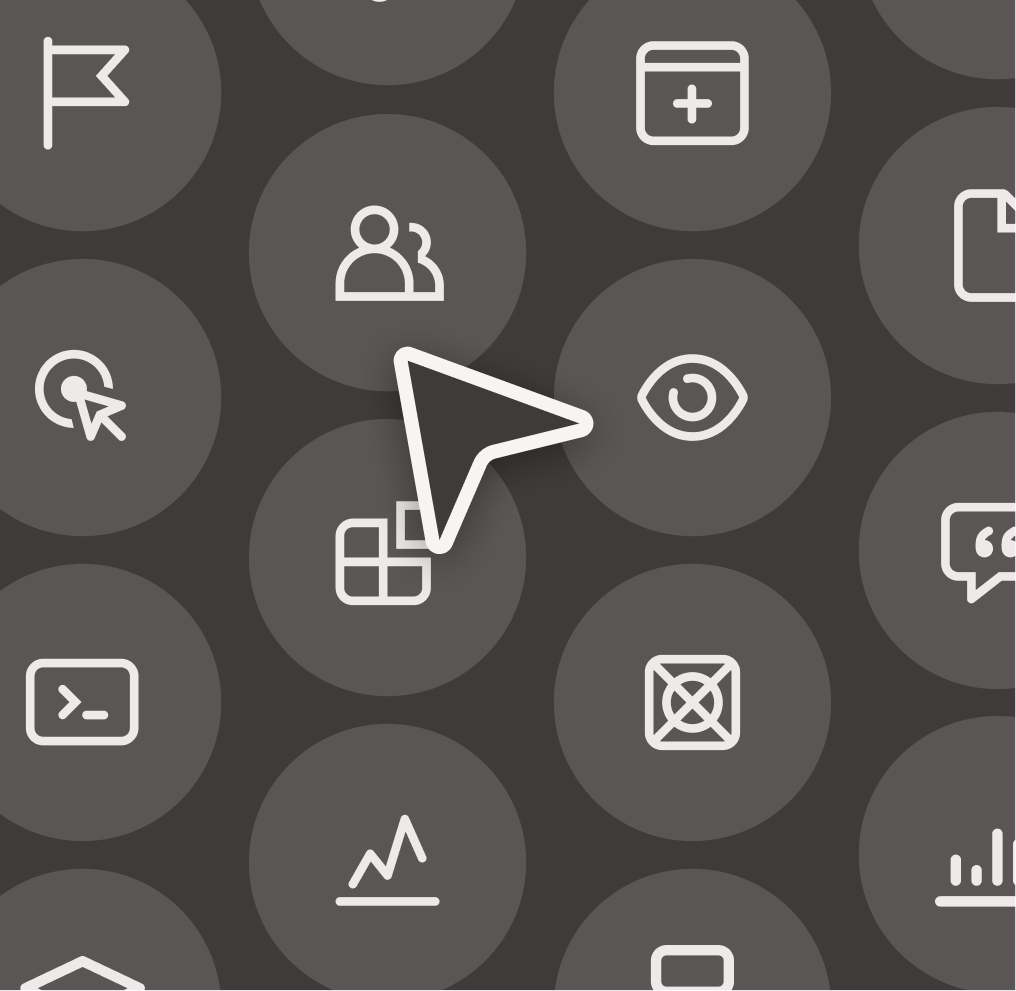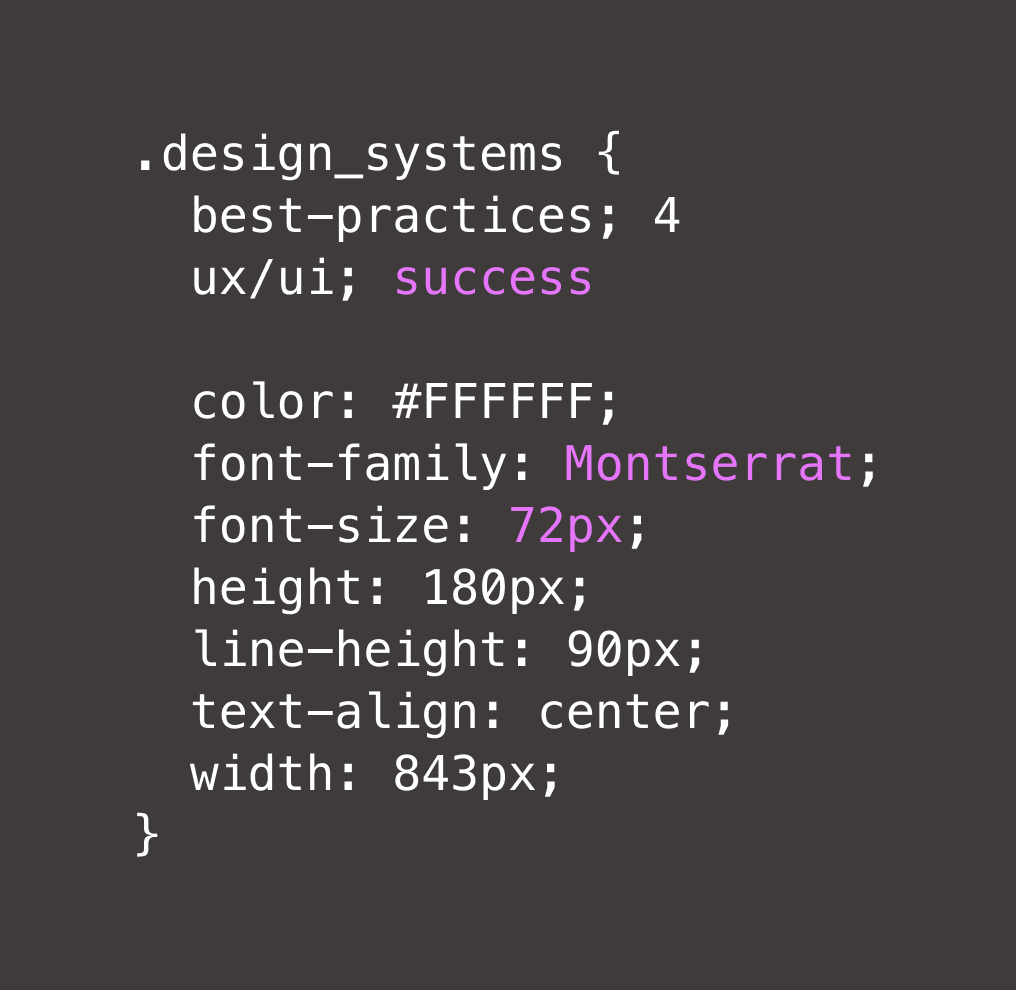Step 1: Plan your design system

Define your design system’s goals
Before you jump into creating the components, patterns, and documentation that'll make up your design system, it's essential to define its goals. Start by understanding your company's business objectives — how will your design system support them? For example, consider how the solution will enhance brand consistency, improve the user experience, and streamline development processes. These are all essential contributions to the company's success.
At the same time, consider what your team needs from a design system. Conduct thorough research to understand end users’ pain points and preferences. Once you’re aware of the expectations, you can create clear, measurable goals. These objectives will serve as guiding principles throughout the development and implementation phases, helping you lay a solid foundation for creating a system that truly adds value to your organization.
Create your design system team
Next, assemble your dream team to champion your design system project and drive it forward. This should be a cross-functional group of developers, UI/UX designers, and product managers. These people will all have different experiences working on your products, so they’ll will bring a valuable mix of perspectives. You may also want to include someone from leadership who can help secure buy-in for the project as needed.
Evaluate options for creating your design system
Your design system will eventually contain lots of patterns, components, and tokens that can be reused throughout the company. For each, you’ll include code snippets, examples, and other documentation to help people use them correctly.
But where will your design system live, and how will you build it? Some companies build their system from scratch, but a ready-made solution like Frontify can help you focus on the contents rather than the tedious work of setting up something new. Either way, your solution should be a centralized online space that anyone on the team can easily access.
Step 2: Lay the foundation of your design system

Establish core design principles
Establishing core design principles provides a solid foundation for your design system. They should reflect your brand's ethos and values — what your company stands for and how you want users to perceive your products or services.
Collaborate with stakeholders across the business to identify and articulate these principles. Bringing in multiple perspectives will ensure they resonate with design, development, and product teams. Usability, accessibility, scalability, and brand identity are some factors you may want to include.
Defining these guiding principles early provides a decision framework for designers and developers and allows them to make informed choices that align with your design system’s overall vision and purpose.
Develop your design language
You likely already have a style guide or brand guidelines that document some of your brand’s visual aspects, such as logos, colors, and typography. Use this as a starting point to develop a design language to help your teams create a consistent and cohesive visual experience for your product, app, and website.
Your design language should include color palettes, typography, icons, and spacing. These visual elements create your brand’s overall look and feel — identifying them is an important part of building the foundations of your design system.
Conduct a visual and component audit
Next, you want to understand what existing elements are worth adding to your design system. Your designers and developers will likely already have documentation that organizes or lists the components they use. So, conduct an audit where they walk you through this collection.
Understanding what already exists will give you a great starting point. You’ll be able to see which elements to bring into a centralized system and identify gaps where you need to prioritize creating new reusable components or patterns. Similarly, you’ll spot duplicates and redundancies used by various teams or on different projects.
Step 3: Build and document components

Create scalable UI components
Now, you can start adding components and patterns to your design system. Your audit will tell you what to focus on first.
When you’re creating new elements for your design system, focus on the following priorities:
- Create components in a reusable format and include code snippets
- Provide variations for all use cases
- Show examples of active components
These components will provide your designers and developers with a library of reusable assets to improve consistency and efficiency across different projects and departments — everyone will use the same basic “building blocks” for their work.
Provide documentation for adoption and governance
These are the topics your documentation should cover:
- When to use each component or pattern
- How the element works
- Guidelines and best practices for using the components
- Any known issues with the components, such as accessibility challenges
- Examples of the components used correctly vs. incorrectly
- Links to related components or patterns
- When the components were last updated, possibly including a changelog
- How users can provide feedback or suggest changes
Step 4: Implement your design system in projects

Adoption and collaboration
Once you’ve built out your design system, including reusable components and documentation, you need to get people to engage with it. Start by providing training to the teams that will use it most — product, design, and development. Help them understand how to access and collaborate. You may want to run workshops or drop-in sessions where new users can ask for support.
In the longer term, the success of your design system will depend on its becoming an everyday tool for your teams. Introduce it during onboarding, and ensure teams make it part of their core workflows for UI, UX, and other development projects.
Tools and technologies
The right tools and technology support the development and maintenance of your design system. They can also help you share it, provide updates, and let everyone across the organization know what’s new.
For example, if you document your design system in Frontify, you can use our brand newsletter solution to send updates from within the same platform. This lets you share important news, changes, or updates, which improves company awareness and engagement with the system.
Step 5: Manage and evolve your design system

Governance structure
Your design system should be a living environment that you expand and update. Any changes you make should be done with as much consideration and care as when you created it initially.
Set up a clear process for governing changes and updates to your design system. Make sure you answer the following questions:
- When do we make changes or updates?
- Who can suggest changes?
- Who’s responsible for implementing changes?
- Who reviews and approves any changes?
Having a formal process for ongoing governance will help you maintain a high-quality design system that provides the most value to your organization.
Community engagement and feedback
The people who work with your design system every day will have the best insights about improving and expanding it. So, you should deliberately foster a culture that encourages team members to contribute suggestions or bug fixes to your design system. You should also invite feedback regularly and offer multiple channels where users can provide it.
For example, Atlassian openly invites contributions to its design system, with different ways for team members to get involved. Inviting community contributions and feedback creates a culture of engagement and drives continuous improvement.
Step 6: Track and measure design system adoption

Success metrics and performance indicators
The true measure of your design system’s success is whether people are using it and how it’s transforming your organization’s design, development, and collaboration processes. Track some of the metrics and key performance indicators below to understand the effectiveness of your system:
- Component and pattern use
- Documentation visits and total number of visits
- Design system adoption rate (by department, team, or individual)
- Development time spent creating new components
- Development time saved using existing components
- Consistency in UI and UX
A brand-building platform can help you document your design system
A centralized brand-building platform like Frontify can be the perfect home for documenting your design system. It provides a secure space to record your design system alongside other core brand management resources like guidelines and digital asset management.
A central platform makes it easier to create seamless and consistent experiences: Designers can find core brand assets and consult your guidelines on one platform. Developers can access reusable brand and product components. Designers and developers can collaborate more efficiently, building on the same visual foundations with a clear understanding of your core brand identity.
Learn how design systems support everyone who contributes to your brand — from creative teams to front-end developers.


